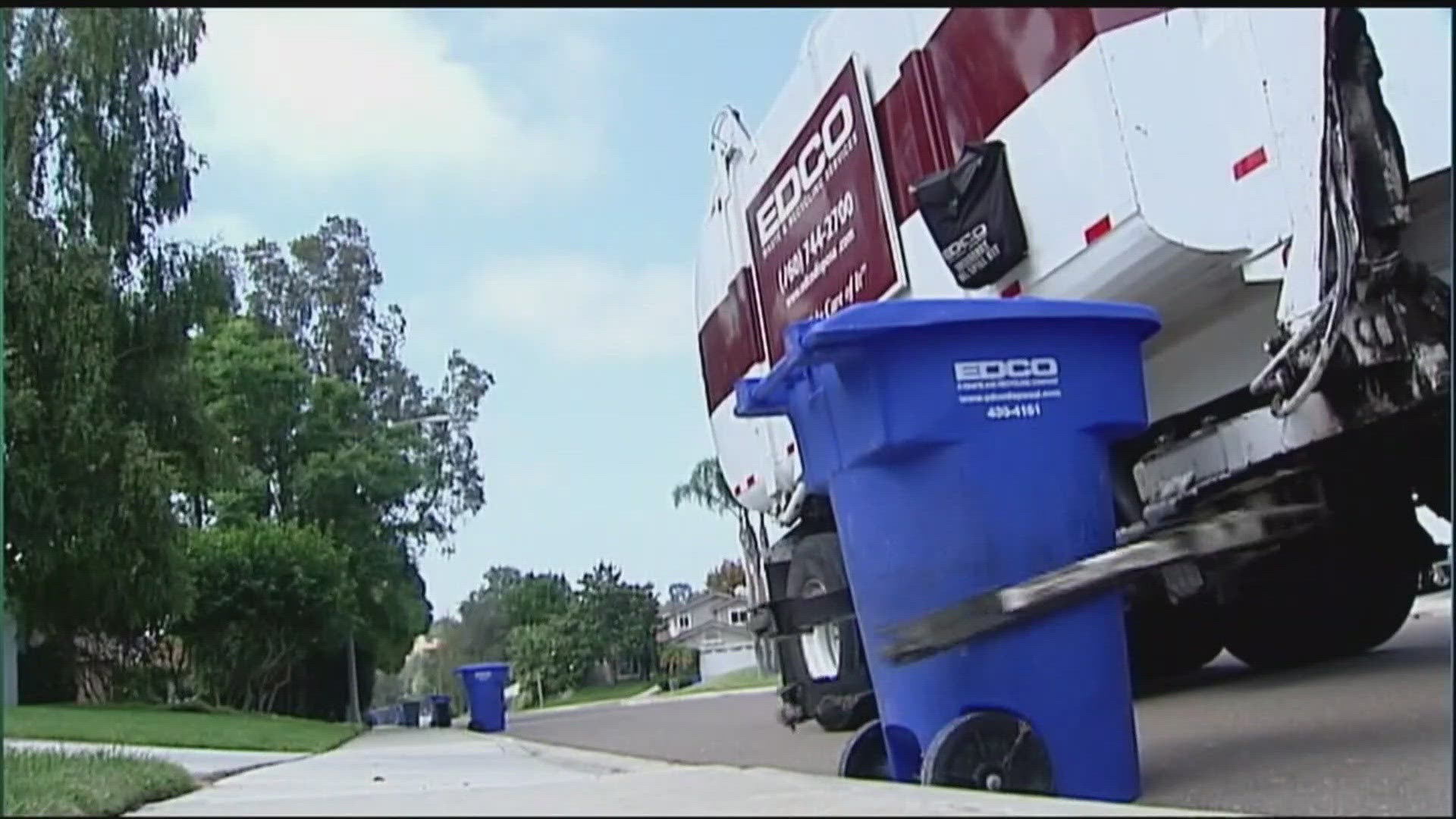SAN DIEGO — Much of the nation’s plastic problem has to do with packaging. Whether it's food, water bottles, or cleaning supplies, you might think it's okay to buy items that display the triangle recycle symbol.
But what happens once you put all of that plastic into the blue bin? Where does it go? We're working for you to track those plastic recyclables. So here's how we're going to do it.
The experiment
CBS 8 anchor Neda Iranpour got a 4-pack of Apple AirTags to track their location through her iPhone. She used heavy-duty glue, she put them inside on the bottom of each container.
She attached an AirTag to a water bottle, a yogurt container, an orange juice bottle, and a wipes container. She also made sure the "find my" feature on her phone was in sync with each AirTag.
A team of four CBS 8 employees put the recyclables in different areas of San Diego County. They all used different waste pickup companies.
- Ryan tossed the water bottle in Oceanside.
- Colleen put the orange juice bottle in her blue bin in El Cajon.
- Kenny attempted to recycle the wipes container in Chula Vista.
- Neda put the yogurt container in a bin at a condo complex in University City.
They did this on the same day as their regular pickups, to ensure the recyclables didn’t sit out for long and risked getting tampered with.
"I Love a Clean San Diego" shared what might happen next. Turns out, that's not an easy answer.
"Even in San Diego, we have almost a dozen waste haulers moving and they all do it differently. As a consumer, you think the producers are all talking to the waste haulers and they're all sharing information, but it’s really not that. Everyone has their own business to run," said Steve Morris, I Love a Clean San Diego executive director.
“Some have facilities here in town that actually process the recycled material and they sell it to somebody who can reuse it. But a lot of it gets shipped out of the county to another facility where it might get sold to a foreign country, shipped across the ocean, or ends up in landfill where they can’t use it,"
What happened next?
Chula Vista
The first one to get hauled away was in Chula Vista. But within the hour of it being put in the blue bin, we noticed it was at a location about a block away.
But it was nowhere to be found there. Which means it likely got smashed and stopped transmitting.
Oceanside
The water bottle in Oceanside made it all the way to Orange, California, about an hour north in Orange County.
It looks to have stopped at Waste Management’s Orange Transfer Station.
“That water bottle could’ve been sold to a center that is now processing it for recycling,” explains Morris.
El Cajon
The orange juice bottle dropped off in El Cajon, was last seen in Lemon Grove at the EDCO facility on Federal Blvd. But we also can't tell if it’s sitting on a truck, getting recycled, or in the landfill.
“A lot of the waste haulers have transfer stations where they ship all their plastics or aluminum to a different facility then it might be waiting their until a truck is filled then shipped somewhere else to a different location,” Morris says.
University City
The yogurt container in University City was last seen at the exact spot it was dropped off but when Neda returned to try to find it, the recyclables had been picked up and there was no sound of an AirTag. Meaning it also may have broken apart.
So, is our experiment an example of what happens when recycling?
"This is telling us exactly what I would expect. Some is staying here and some is getting shipped off, some might get blown over," Morris said.
We may have had some inconclusive results here but it does show that even the process of trying to recycle leaves its own carbon footprint.
“So this is a good story about how our practice doesn’t always go to the same place and it doesn’t always get processed the same way and there might be fuel and resources getting used so it’s a complicated thing that we all should all be considering," he said.
That’s why only less than 10% of plastics end up getting recycled.
“We have a term called wish cycling everyone puts everything in blue bin hoping its going to get recycled,” says Morris.
But more than 90% of what people dump in blue bins, ends up taking up precious space in a landfill for hundreds of thousands of years, or it ends up breaking apart into tiny pieces among us and in the oceans, getting into our bodies and that of animals.
"They’re out there because they’re convenient but that convenience comes at a cost.” he said.
At least knowing what to put in the blue bin can increase the chance of it getting recycled.
Tips
- The message from I Love a Clean San Diego is your recyclables need to be empty, loose (meaning not in a bag) and dry.
- Keep the caps and lids on.
- Don’t put anything flimsy that can get blown by the wind in the bin, and anything smaller than a credit card won’t make it.
- Also, shop for clear plastic when you can instead of colored bottles. If it's dyed, it can only be turned into something of the same color. So, waste haulers have to separate everything by color too. Making their job easier, might help ours.
WATCH RELATED: This man put a GPS tracker in his recycling. Here’s where it ended up.

